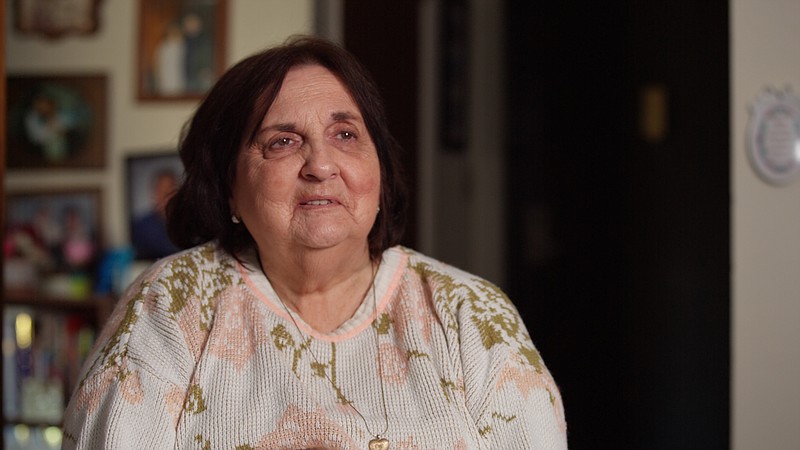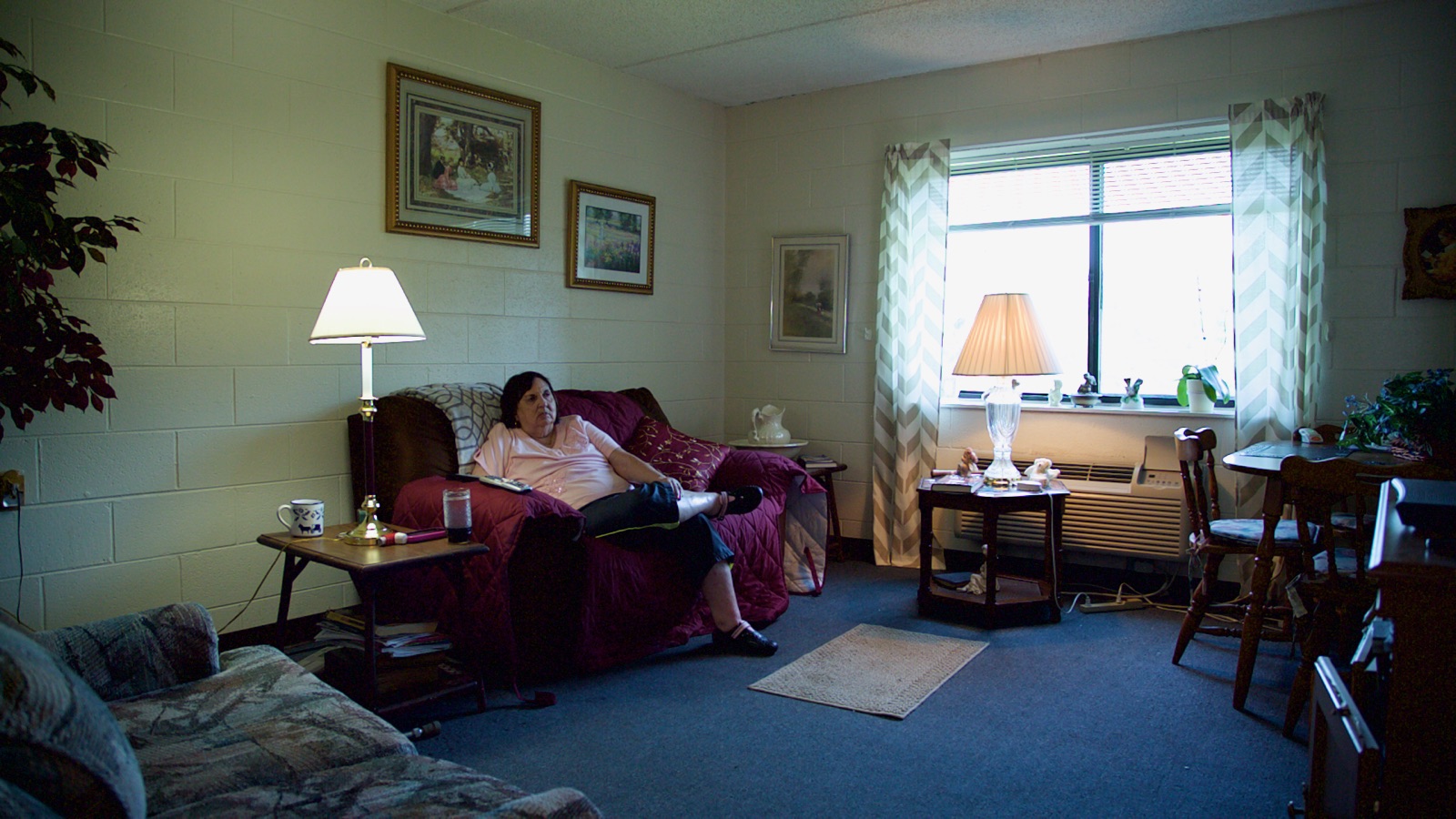For Peggy Byous Phillips, there was never a straight path to the truth about the daughter she bore as an unwed mother in 1962.
Did the baby die shortly after birth? Did she survive and was secretly adopted?
Phillips, a lifelong resident of Chattanooga who died in March at age 78, spent half of her life searching for answers. Eventually she would gain the assistance of a Los Angeles-based filmmaker, who would relate the saga in his first feature-length film, the documentary "Where She Lies," now available for streaming.
"No one will ever know for sure what actually happened," said producer Zach Marion.
But with his help, Phillips was able to document the history through additional DNA tests and careful examination of medical records.
Still, there would be no explanations for the lies she was told, no consolation for the decades of uncertainty she faced. Betrayed or misled by some of the people closest to her, Phillips would be left to grapple with pieces of a life's puzzle that never quite fit into place and an abiding grief that not even the truth could touch.
"This is her story as she related it to me," said Marion. "It's almost stranger than fiction."
DEATHBED CONFESSION
Marion, who co-owns Zemma Productions with his cinematographer partner Emma Kragen, said he first became intrigued by Phillips' story in 2009 while developing show concepts for cable television networks. A special he did for TLC, "Births Beyond Belief," led to an idea for an end-of-life series.
"I had a concept about deathbed confessions that I thought would be an interesting series for Investigation Discovery," he said.
For weeks he researched news accounts of life-altering deathbed confessions, but the one he kept coming back to was a 1997 Associated Press story with a Chattanooga dateline. A woman named Peggy Byous Phillips was asking a judge to order a grave to be exhumed so that the remains could be tested for DNA - if the grave held remains at all.
"I feel very strongly now that the grave will be empty," Phillips was quoted as saying.
Phillips, who was widowed and had a son in law school, had long grieved the loss of her infant daughter 35 years earlier, but her confidence in the baby's fate was unresolved. Questions first surfaced in 1964 when an aunt, in an attempt to console Phillips, confided that the baby hadn't died but had been adopted. Her parents denied the assertion.
But in 1995, when Phillips' mother, Elizabeth Byous, lay dying, she told Phillips that the aunt's story was true. She said Phillips' father, Claude Byous, had signed the baby over to another couple for adoption. Elizabeth Byous provided no further details but promised to take Phillips to meet the long-lost daughter as soon as she was released from the hospital. She died two days later.
SOMEONE'S DAUGHTER
For Marion, the account of Phillips' loss was not easy to follow. Family members and other principals he interviewed often told conflicting stories - as did Phillips herself at times. He believes her dueling narratives simply represented the facts as she knew them and the facts as she wished them to be, muddled by the swirl of misinformation she had spent years trying to sort through.
After her mother's deathbed confession, relatives had helped Phillips find the young woman they believed to be her daughter, who had been adopted by friends of her aunt. Phillips and the young woman both gave blood samples for DNA tests to determine whether they were related, but the results were inconclusive. Experts said the better test would include the father's blood. The man Phillips identified as the father refused to give a blood sample.
To see it
“Where She Lies” is available for viewing on multiple internet-on-demand platforms, including Apple TV, Prime Video and Google Play. Find links to providers at https://www.whereshelies.com/. The film features multiple Chattanooga residents and scenes.
Phillips hired a lawyer to try to get answers from the woman's adoptive parents. The father asked the lawyer if Phillips had any proof to accuse them of wrongdoing. When the lawyer answered no, the man left, refusing to cooperate. Before she left, the mother produced childhood photos of the couple's adopted daughter and offered them to Phillips.
Phillips and the young woman forged a relationship, each wanting what the other represented, Marion said. But their shared happiness was short-lived. The young woman was an addict and had served prison time for drug-related crimes. When Phillips took her in so that they could get to know each other better, the young woman stole Phillips' jewelry and checkbook.
FAMILY SHAME
Phillips was 20 and unmarried when she gave birth to a baby girl she named Darlene on June 4, 1962. The father was a man she had been dating. He was a little older, but years more experienced. She described herself as "19 going on 13." He, she would learn, was married with two children.
According to Phillips' account, Marion said, the encounter that resulted in her pregnancy would be considered a sexual assault - date rape - by modern standards. He had been drinking and he got aggressive, Phillips told Marion.
"In all of our interviews, Peggy never said the actual words 'he raped me,' but it's clear from our conversation that's what happened," the filmmaker said.
Phillips told Marion she was a virgin and didn't think she could get pregnant the first time, but she did. She told him her parents didn't want her to have the child. Her father especially believed the out-of-wedlock pregnancy brought shame to the family.
"My father said I could come home from the hospital, but not the baby," Phillips recalled in the film.
When Phillips met with an obstetrician, he urged her to give the child up for adoption, even gave her the paperwork to sign at that first meeting, she said. The hospital required her to sign in under a husband's name to give birth there. She registered under the name of the man who impregnated her.
He died in 1999, before the film project began. His widow acknowledged he was "a womanizer."
"I'm sure there might be more [children] out there," she added. "I don't know."
More than just one woman's sorrowful story, Marion believes "Where She Lies" is also a window into the era's social morés that often ostracized unmarried pregnant women and turned a blind eye to sexual assault by an acquaintance.
"Peggy is someone who spent her whole life dealing with this trauma - a trauma that was really the result of historical and societal and systemic oppression of women who are survivors or victims of sexual assault," Marion said. "I think being able to reclaim [her truth] was important to her."
'A MORAL OBLIGATION'
Marion said a bit of internet sleuthing produced a last known address for Phillips. Three days after he mailed a letter stating his interest in her story, his phone rang. It was Phillips, who told him what the grave had held and other details of her story.
"From the very first phone call with Peggy, it was clear she had not found her child and believed her daughter might still be out there," he said. "That turned into another phone call and another phone call. Days turned into months, and I found myself listening to her entire life story, piece by piece by piece."
Marion said he felt "a moral obligation" to try to help her and asked her permission to document her experiences for a film.
"Obviously it was an effort to try to find her daughter," he said. "But she also sensed her story might be something to be shared with others and have an impact on them emotionally, in a positive way."
Although Marion entered the picture long after the baby's grave had been exhumed and testing of the bones produced a DNA match, Phillips had still not come to terms emotionally with the results.
"I was hoping with [DNA evidence] in hand that Peggy would finally put it to rest," her attorney, Doug Cox, told Marion. "But she didn't."
For a mother yearning for even a glimmer of hope that her child was alive, there were multiple reasons not to. How to explain the unusual behavior of the adoptive parents who wouldn't answer her questions but shared baby pictures? The bond Phillips felt with the daughter they had raised? The aunt and other family members who believed the baby had lived? How, especially, to explain her mother's deathbed confession?
"It's been with me all my life," Phillips said. "Very seldom do I ever go a day without thinking about it."
Twenty years after the initial tests, Marion tracked down the remains, still in the possession of the Hamilton County Medical Examiner's Office, and submitted them to a lab for mitochondrial DNA testing, which traces the maternal lineage. Again, they were a match.
Hospital records obtained by Marion, which included a minute-by-minute decline of baby Darlene's health, were further proof that Phillips' newborn daughter had died two days after birth. The cause was attributed to a lack of oxygen stemming from a congenital heart defect.
RESOLUTION
For all the twists and turns the case took, Marion believes telling her story on film was secondary to Phillips, whose grief over the loss of her firstborn child was compounded by a lifetime of uncertainty.
"I think that Peggy needed somebody to listen to her," he said. "I was that conduit."
Phillips saw her newborn only once, while sedated, through the nursery window. She never cradled the baby in her arms. She was not present at the grave when Darlene was laid to rest.
Not until 55 years later, when a tiny white casket, covered with a spray of pale pink roses and baby's breath, was lowered back into the earth.
Email Lisa Denton at ldenton@timesfreepress.com.

